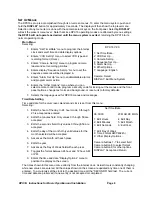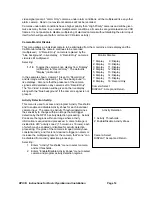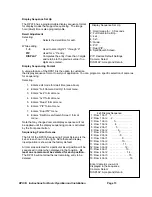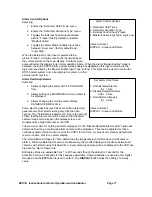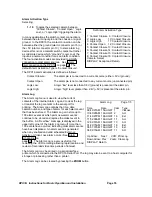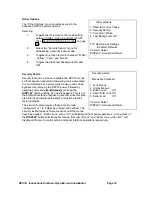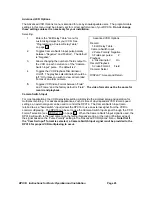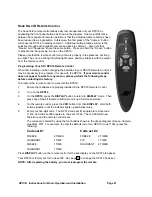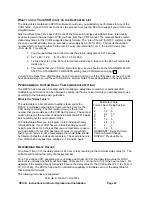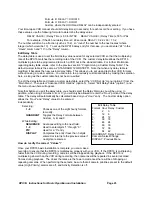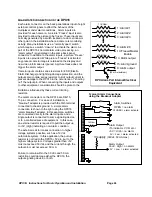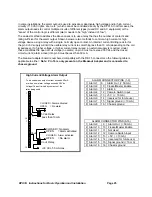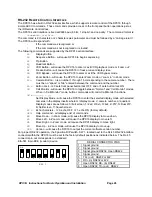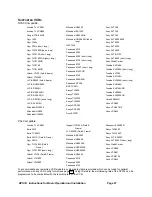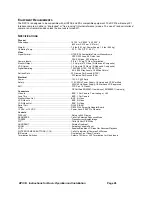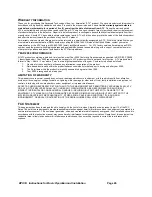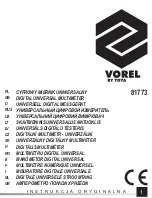
DPX16: Instructions for Basic Operation and Installation
Page 22
W
HAT TO DO IF
Y
OUR
VCR
IS NOT ON THE
S
UPPORTED
L
IST
The delay tables contained in DPX16 software should give you satisfactory performance for any of the
VCRs listed. If your VCR is not on the list, the process to set up the DPX16 to support your VCR is very
straightforward.
Most non-Real-Time Time Lapse VCRs are of the formula A or B type described below. It is usually
possible to determine what type of VCR you have from the VCR’s manual. The manual should contain
video delay times for the VCR’s supported hourly formats. The “rule of thumb” for NTSC systems is that
you take a published delay time (in seconds) and multiply by 60 (50 for PAL). The result should be a
number which is close to either 1/2 the record hourly rate (Formula A) or 1/3 the record hourly rate
(Formula B). For example:
1.
Your manual states that in 24 Hr mode the picture delay time is 0.21 seconds.
2.
0.21 x 60 = 12.6
(0.21 x 50 = 10.5 for PAL)
3.
12.6 is closer to 12, the 24 hour record rate divided by 2, than to 8, the 24 hour record rate
divided by 3.
4.
This means that your VCR is a Formula A type, so you should use the STANDARD 24 HR
STEPS or STANDARD 12 HR STEPS setting (see VCR Selection on page 10).
If your VCR is Real-Time, High Density, not a Formula A or B type or if the VCR does not have 12 or 24
hour standard steps, you will need to construct a Custom Delay Table as described in the next section.
P
ROGRAMMING A
C
USTOM
D
ELAY
T
ABLE
(A
DVANCED
O
PTION
)
The DPX16 has a means of creating and/or modifying a delay table to match your particular VCR.
Satisfactory performance can be obtained by setting up the one or two formats you actually plan to use
according to the following basic guidelines.
What is the “Delay Table”?
The delay table is a list of pairs of numbers that control the
DPX16 ‘s multiplex output field or frame rate being sent to the
VCR during recording. The first column (Hour) is the format
number that you would see in the VCR Set Up menu. The second
column (Delay) is the number of video field times the DPX16 waits
before putting out the next camera image.
The delay table allows you to program up to 8 individual hourly
format settings. If your VCR has more than 8 settings you will
need to pick the set of 8 choices that you are most likely to use in
your installation. If your VCR has fewer choices, or you want to
restrict your choices to just a few settings, the whole table should
be filled such that the choices are repeated. The example here is
for a VCR which only has three settings; 2, 12, and 24 hours.
D
ETERMINING
D
ELAY
V
ALUES
For a Real Time VCR, the delay value for 24 hour or less recording is the minimum delay value (3). The
software will not allow the entry of a lesser number.
For a Time Lapse VCR, depending on your make and model of VCR, the delay table value for NTSC
systems is normally one half (most time lapse VCRs are 1/2 ) or one third (1/3) of the hour number. For
example, if the selected hourly format is 48 hours, the delay value for the VCR is either 24 (1/2 of 48) or
16 (1/3 of 48). The DPX16 has a built in calculation capability to facilitate set up of the delay table for
these standard formulas.
The following formulas are supported:
Formula A DELAY = HOUR/ 2
Edit Delay Table
Format Hour Delay:Custom
1:
2 3
2:
12 6
3:
24 12
4:
2 3
5:
12 6
6:
24 12
7:
2 3
8:
12 6
QUADRANT: Delay Formula
Camera: Select/Change
DISPLAY: Previous Menu


